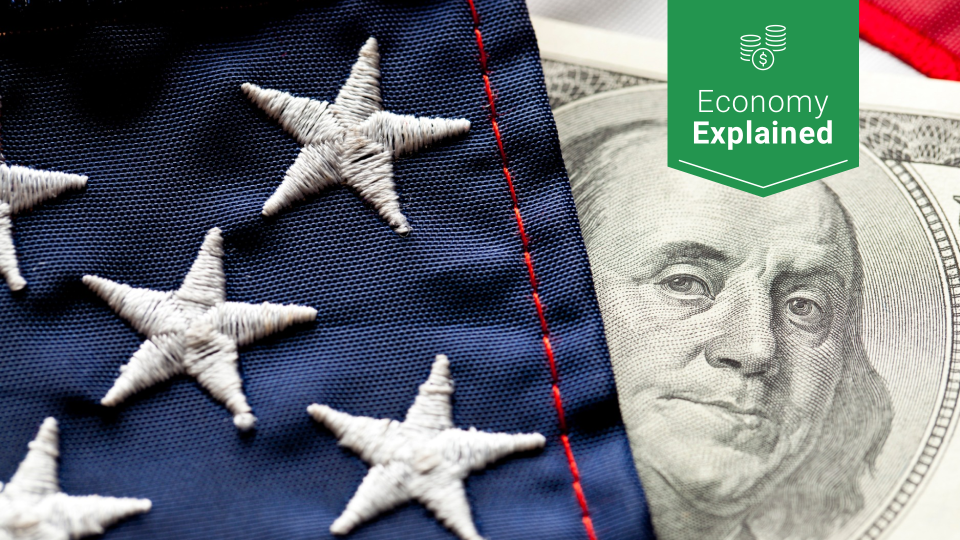Everything You Should Know About Tariffs and How They Impact Your Finances

Tariffs have been dominating the headlines since the Trump administration began imposing them in 2018 on steel and aluminum products from most countries and on many Chinese goods. The former president argued that these levies would give the U.S. more leverage in negotiating trade deals, would help protect national security and would benefit American workers. However, several studies and reports claimed that then-President Donald Trump’s tariffs did more harm than good, leaving people to question why President Joe Biden hasn’t repealed the tariffs yet.
Read: What Is Inflation and What Does It Mean When It Goes Up or Down?
See: What To Expect From an Economic Boom
All the recent talk about tariffs might seem like much ado about nothing. But tariffs do have a big impact on the economy and on your finances.
What Are Tariffs?
A tariff is a tax on goods imported from other countries. The company that imports the goods — not the country that exports it — pays the tariff, which typically is a percentage of the value of the import. For example, if the U.S. imposed a tariff on foreign steel, American companies that imported that steel would pay the tariff on it. The country that exported the steel would pay nothing.
So why would the U.S. government want to force American companies to pay a tax to import the materials they need to make products or the goods they sell in their stores? Initially, tariffs provided a source of revenue. However, the government uses them primarily now to protect certain U.S. industries by making imports more expensive, according to The Council on Foreign Relations, an independent think tank. The assumption is that consumers will buy American-made products instead.
Economy Explained: What’s the Difference Between Fiscal vs. Monetary Policy
How Tariffs Have Been Used in US Trade Policy
Tariffs have been a tool of U.S. trade policy since the nation’s early days. In fact, the first major legislation passed by the first Congress was the Tariff Act of 1789, which was designed to raise revenue and protect U.S. manufacturers. Tariffs remained a key source of revenue until the 16th Amendment was passed in 1913 and authorized the income tax.
However, to protect America’s farmers, Congress passed the Smoot-Hawley Act of 1930 that levied tariffs on agricultural imports. The act also raised industrial tariffs to a new high, which led U.S. trading partners to raise their tariffs. The result was a collapse in international trade that pushed the world further into the Great Depression.
Read: National Debt and Deficit — What Is It and How Does It Affect Me?
In response to the failure of the Smoot-Hawley Act, Congress passed several pieces of legislation over the years that gave the executive branch more power to negotiate tariffs and trade agreements, according to The Council on Foreign Relations. Democratic and Republican presidents have used that authority to reduce tariffs, and the U.S., for the most part, has favored a free trade stance since the end of World War II. The exceptions were in the early 2000s when then-President George W. Bush raised steel tariffs to protect the U.S. steel industry and, most recently, when Trump raised tariffs in 2018 on steel and aluminum imports and a range of products from China.
See: What Is Durable Goods Spending and What Does It Signify?
How Tariffs Impact the US Economy
Tariffs do generate revenue for the U.S. For example, the Trump tariffs brought in $79 billion in revenue in 2019, according to an analysis by the Brookings Institution.
Also, industries and workers that produce the goods that are protected by tariffs benefit. The 2018 tariffs on steel imports helped create thousands of jobs in the U.S. steel industry. And tariffs on imported washing machines fueled the creation of 1,800 jobs at U.S. companies that produce washing machines, according to research by the University of Chicago and Federal Reserve economists.
However, tariffs also can lead to job losses in industries that rely on foreign imports to make their goods. And when other countries retaliate with their own tariffs on U.S. exports, the American companies that export those goods suffer. A study by Trade Partnership Worldwide estimates that for every job gained as a result of the recent tariffs, eight will be lost.
See: How Do We Track Unemployment and Joblessness?
How Tariffs Affect You
Trump claimed that China was paying for the tariffs that he imposed on goods from that country. The truth is, though, that American consumers are often the ones who foot the bill.
U.S. companies pay the tariffs on the goods they import then tend to pass on those costs to consumers. For example, the Trade Partnership Worldwide study estimates that the average American family of four will pay an extra several hundred dollars a year to several thousand dollars a year for goods and services as a result of the recent tariffs.
Although tariffs are touted as a way to protect American industries, they don’t protect American consumers from higher prices. And they don’t protect all American jobs — just those in industries protected by the tariffs. So be aware that when the government imposes tariffs, your finances will likely take a hit, and possibly a really big hit.
This article is part of GOBankingRates’ ‘Economy Explained’ series to help readers navigate the complexities of our financial system.
More From GOBankingRates
Last updated: March 19, 2021
This article originally appeared on GOBankingRates.com: Everything You Should Know About Tariffs and How They Impact Your Finances
